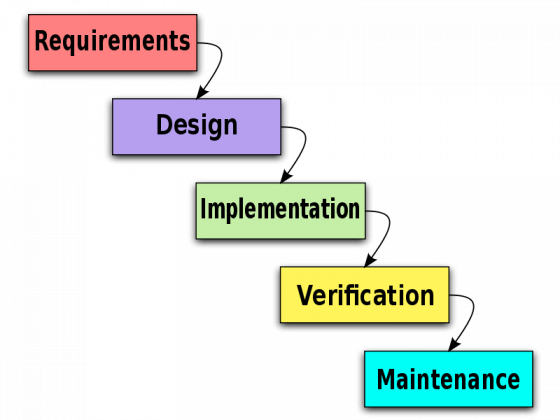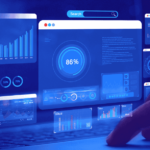BACKGROUND:
- Software development methods are gradually being changed according to the changes in software techniques and new requirements from customers. In the present situation, our software development is dynamic. So, the organizations need to urgently adopt processes, development methods, and strategies when adjusting to new situations.
- However, the traditional, waterfall software development approach is lacking the flexibility and capability to dynamically change and adjust the current development process. To overcome this Agile development has attracted huge interest from the software industry. As an after effect more organizations start to adopt the agile development approach. In which, migration is the compulsory procedure for such organizations to transfer from the waterfall development approach to an agile approach. Top Software Developers are currently using Agile methodology.
INTRODUCTION:
- In addition to the correct technology, in software development, it is highly important to decide on the correct model of project management. In the search for the approach that would lead to the assured success and safe project finalization, the first model that appeared as the appropriate one is the Waterfall Model. Then, the alternative models developed, such as the Prototyping Model, Incremental Model, Spiral Model, Rapid Application Development Model, Engineering Driven Model, and in the year 2001 the Agile Software Development was created. The reason for such a huge number of models lies in the percentage of failure to manage projects which is still very high, but in the meantime, project management has also displayed certain betterment.

WATERFALL MODEL:
- The waterfall model was proposed in the year 1970. It is a sequential design process and commonly used in early software development. This model is called in such a way because the model develops systematically from one phase to the other in a downward fashion, like a waterfall.
- This approach comprises five phases to be completed sequentially to develop a software solution. The phases are requirement gathering (analysis), design, implementation, verification (testing) and maintenance. which is shown in the following figure. The linearity of this method indicates that each phase may be assigned to the separate team and the development team goes ahead to the next stage of software development only after the previous stage is fully accomplished.
- The advantages of this model lie in the fact that a lot of attention is dedicated to paperwork in this method when compared to the newer methods. When a new person enters the project, it is easier for him to carry on the work from where it has been left. The newer methods don’t document every step in their developmental process which makes it difficult for a new joiner of the team to understand which step is going to follow. The second advantage is that the Waterfall Model is well known amongst the developers, and therefore it is easy to be adapted.
- There are many disadvantages to this waterfall model. The main disadvantage of this model is that a huge amount of time is wasted while developing the project. If designers are still designing software, the developers are in an ideal state. Also, because the outcome is expected at the end of the phase, usually workers are not so hardworking at the beginning of the phase, and then as the deadline is closer, they overwork to finish in time. The phase deadline is often missed. Another disadvantage of this method is that the testing period comes considerably late in the developmental process and for that reason, the design flaws are found late and all phases have to be repeated. Detailed documentation during the Waterfall method takes a lot of effort and time to maintain valid versions of documents also.

AGILE METHODS
- Agile software development focuses on producing a rapid result. In Agile a large backlog is divided into small iterations with design, build and test. During every iteration, the progress is checked every day during a quick meeting. The meeting is called Stand-Up. In a Stand-Up, work done on the previous day, goals for today and blockers are discussed. When one iteration is released, feedback is used and built into the next iteration. Agile methods should be implemented in high dynamics environment conditions. If there is no dynamic environment, agile methods should not be applied.
- Agile methodologies including eXtreme Programming (XP), Crystal, Scrum, and feature-driven development provide techniques for delivering customer value on software development projects while creating agility through rapid iterative and incremental delivery, flexibility, and a focus on working code
- Agile methods care for different values in comparison to the Waterfall Model in the following manner.
- Individuals and interactions are more important than processes and tools.
- Working software is more important than comprehensive documentation.
- Customer collaboration is more important than contract negotiation.
- Quick response to change is more important than following a plan.
The Twelve Agile Manifesto Principles
- The most important is to satisfy the customer through early and continuous delivery of valuable software. Hence, a satisfied customer is a priority.
- A change request is allowed even late in development. This can be used as an advantage over the competitors.
- Functional software is delivered often, from a couple of weeks to a couple of months Shorter period is preferred.
- Business people and developers must work mutually every day during the project.
- Projects are built around motivated individuals. The Principle is to give them the environment and support they need and trust them to get the job done.
- A face-to-face conversation is the most efficient and effective method of conveying information to and within a development team.
- The primary scope of progress is working software.
- Agile processes promote sustainable development.
- Constant study of technological excellence and good design enhances agility.
- Keeping simplicity is essential.
- The best architectures, specifications, and designs develop from self-organizing teams.
- The team inspects periodically good and bad procedures and accordingly tunes and adjusts its behavior to become more effective.
Agile Methodology Tools
The list below shows some of the best tools available to implement Agile in a project
ActiveCollab :
- An affordable tool for small businesses and it is easy to use.
Agilo for Scrum :
- Using this tool, stakeholder gets updated automatically on the project’s progress It has sprint reports and burn-down charts for better data mining.
Atlassian Jira + Agile :
- This is a powerful project management tool facilitates development by incorporating Scrum, Kanban, and customizable workflows.
Pivotal Tracker:
- This tool is geared specifically for mobile app development projects.
Prefix:
- This is a free tool from Stackify, which provides an instant feedback loop to catch and fix bugs before they can deploy.
Difference Between Waterfall and Agile

TRANSITING FROM WATERFALL TO AGILE:
- Agile methods are easier to integrate into the context of working on a single project. Navigating a successful waterfall to agile transition as a company, however, is a bit challenging. Agile does work for teams with multiple projects, for which, we have to think of the whole operation as a single project.
- To start with, plan a sprint with clear, functioning deliverables, typically every two weeks, to determine velocity. To maximize time for everyone on your team, assign tasks and fill up the sprint with 15 to 20% flex time to cover any inevitable unknowns that will arise during the sprint. This helps the Product Owner to figure out who has the bandwidth and who’s overloaded. It will also help the Product Owner determine how much he thinks the work can get done versus how much work gets done. Then we can start to make incremental changes to address that. Any forecasting add-ons for Jira like Harvest Forecast can help with this process. At the end of each sprint, the Product Owner should have a fully functioning deliverable to demo with the client. Use feedback from this demo session to prioritize items for the next sprint. Agile methodology migration is viewed as a type of experiment by managers. With the beginning of the migration process from waterfall to agile project managers display fear of failure. This is the reason why this process develops gradually and there are many transitional phases. We may say that the Waterfall Model mutates into Agile Model at a speed that depends on project participating team capabilities.
Here are a few points which can help the team get ready for a waterfall to agile transition:
Team Capacity :
- Initially, need to figure out what is the total team capacity. It is the total number of billable hours per week for the entire team. In this capacity calculation, we need to add some flexibility to overcome the non-billable hours like designer hours.
Individual Capacity :
- Need to plan each person’s workload individually rather than planning workloads by the entire team. This will help the Product Owner to better accommodate always changing project requirements while also maintaining the team’s sanity.
Estimating :
- A key part of successful sprint planning is estimating each task difficulty. Rate each story points in the Fibonacci scale. The value will be assigned based on the difficulty level. This will help the team on how to execute each sprint’s required deliverables.
Sprint length :
- Sprints are typically two weeks to four weeks long. The product owner can consider adjusting sprint lengths as necessary until he finds something that works for all project stakeholders.
- During this transition, we need to remember that transitioning from waterfall to agile is a lengthy process, but in the end, it improves Product Owner relationships with project stakeholders, including clients, as the work becomes more collaborative. Agile also improves the ability to track company efficiency, and it’s great for morale because collaborative teams show their work and receive feedback at the end of every sprint.
Transitioning Clients to an Agile Process
- Usually, clients tend to eventually like agile processes because they get to review deliverables and offer feedback at the end of every sprint. At first, however, managing a more collaborative process might be a challenging one.
- Here are some steps that can help Product owner more easily transition clients from waterfall to agile:
- Discovery: Start with conducting a session with the client to explain the agile methodologies. This will make them used to work collaboratively.
- Check-Ins: Use ongoing communication to break down formalities by using the collaborative project management tools like Jira, regular status calls, and holding sprint demos in person can help with this.
- Uncertainty: Help the clients understand the value of embracing uncertainty and continuous learning while also being clear with them about expectations around timing, budgets, etc. Features they think they want in the beginning might be re-prioritized during ongoing user tests.
Conclusion
- The waterfall development approach and agile development approach have each advantage, disadvantage, and suitable development environments in software development. The migration process is an attempt to bridge the gap between the two approaches.
- In the progress of migration in an organization, the balance of structuralism and flexibility should be considered, to make the development process is less heavy but still not lacking discipline. Freestyle does not mean neglecting principles. It means documentation and processes are designed and used only when they are needed.
- The biggest difficulties lie in how to change and adapt the agile approach within the current development environment, people factors, and communication methods. Regarding the development environment, it is significant to change attitudes towards the new approach to set up the agile approach development environment and to change team members’ mindset toward the agile approach. As for the people factors, it is related to change project members’ responsibilities, which belongs to the management style. About the communication barriers, communication with more frequent and faster feedback is needed. That is why the adjustment of communication tools should be considered.
- The process described in this article is useful for the teams migrating from Waterfall Model to Agile Model. However, knowing this process could be useful for the teams willing to migrate from any other project management model to Agile.
Feel free to Reach us if you are facing any difficulties. We will assist you.






It’s very straightforward to find out any topic on web as compared to books, as I found this post at this web site.
Thanks, very helpful. Any agile tool suggested?
Aw, this was a really good post. Finding the time and actual effort to create a great article… but what can I say… I
put things off a lot and never manage to get nearly anything done.
Thanks for finally talking about > Transition From Waterfall To Agile
Methodology – Techmango < Liked it! 0mniartist asmr
If you are going for best contents
like I do, simply pay a visit this web page daily because it offers quality contents,
thanks